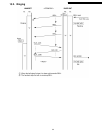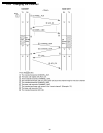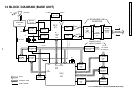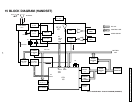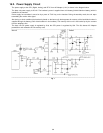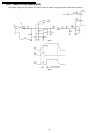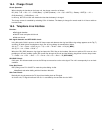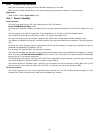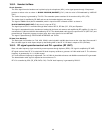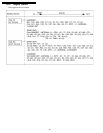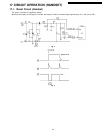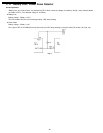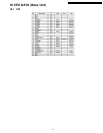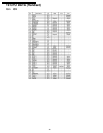
16.4. Charge Circuit
Circuit Operation:
When charging the handset on the base unit, the charge current is as follows;
DC (JK2) → L8 → D6 → L7 → CHG+(Base) → [CHG+(Handset) → L4 → Q9 → BATT(1)....Battery....BATT(2) → L5 →
CHG-(Handset)] → CHG+(Base) → L5,
In this way, the CPU on both unit detects the fact that the battery is charged.
The charge current is controlled by switching Q701 of Handset. The battery is charged in normal mode for 10 hours and then
in trickle mode.
16.5. Telephone Line Interface
Function:
• • Bell signal detection
• • ON/OFF hook and pulse dial circuit
• • Side tone circuit
Bell signal detection and OFF HOOK circuit:
In the idle mode, Q103 is open to cut the DC loop current and decrease the ring load. When ring voltage appears at the Tip (T)
and Ring (R) leads (when the telephone rings), the AC ring volltage is transferred as follows.
JK1 (3): T → L6 → R144 → IC3D (12,13 → 14) → C97 → R148 → Q20 → IC2 (24) [BELL]
JK1 (2): R → L4 → R120 → R152 →↑
When the CPU (DSP) detects a ring signal and press the TALK Key on the handset. Q6 turns on and then RY1 turns on, thus
providing an off-hook condition (active DC current flow through the circuit) and the following singal flow is for the loop current.
T → R160 → L4 → RY1 → R107 → T7 → R116 → D5 → L6 → R161 → R[OFF HOOK]
ON HOOK Circuit:
Q6 is open, RY1 disconnected as to cut the DC loop current and to cut the voice signal. The unit is consequently in an on-hook
condition.
Pulse Dial Circuit:
DSP (Relay) turns RY1 ON/OFF to make the pulse dialing via Q6.
Make/Break ratio when dialing with the Handset: 40%:60%
Side Tone Circuit:
Basically this circuit prevents the TX signal from feeding back to RX signal.
As for this unit, TX signal feed back from Q11 is canceled by the cancellor circuit of AGC.
41
KX-TC1205RUB / KX-TC1205RUW / KX-TC1205RUS / KX-TC1205RUF



